Timothy Miller's Blog, page 20
April 12, 2021
Stranger Day
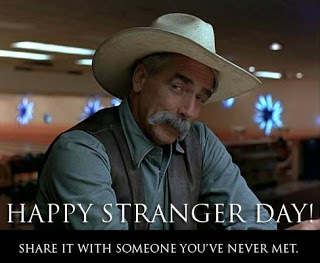
Unfortunately, Stranger Day festivities have been canceled this year due to, uh, circumstances. Some have even accused last year's festivities of, uh, exacerbating circumstances. To which we reply with a resounding, uh, uh, hummnnnuh.
Join us next year, April12th (unless we've met) for all the fun and unfellowship the day deserves.
April 11, 2021
The Begging Bowl
 I've gone and done it. I've signed up with Buy Me a Coffee, which, if you're not familiar with it, is a simple method by which you can drop a dime--no, that doesn't sound good--drop six bits on me in appreciation for what you see here. It's mainly for readers of my Lagniappe feature, but on Blogger I'm not able to assign de widget to de specific page.
I've gone and done it. I've signed up with Buy Me a Coffee, which, if you're not familiar with it, is a simple method by which you can drop a dime--no, that doesn't sound good--drop six bits on me in appreciation for what you see here. It's mainly for readers of my Lagniappe feature, but on Blogger I'm not able to assign de widget to de specific page. (According to my stats, some of you are reading it, or have at least wound up on that page by pure accident and run shrieking into the night. You might give me a hint.)
Of course, you do not have to give a wooden nickel. I am not so easily discouraged and will continue to accost you with material one way or another. But if you feel an itch to do so, I will toast you as I down each cup of delicious Jamaica Blue Mountain (if I should make such largesse. JBM is not for the cheap seats.)
There's a little yellow button on the side of the page, along with all the other junk. If you feel insulted by the very idea, let me know in the comments below. I'm not wedded to the idea, and those used coffee grounds are good for three, four days. Thanks.
(There's a new Lagniappe feature soon to arrive.)
Raymond Chandler
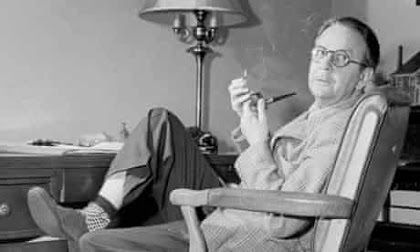
"The most durable thing in writing is style, and style is the most valuable investment a writer can make with his time. It pays off slowly, your agent will sneer at it, your publisher will misunderstand it, and it will take people you have never heard of to convince them by slow degrees that the writer who puts his individual mark on the way he writes will always pay off."
–Raymond Chandler
You've Got to Pitch a Pastiche or Two
I've stated ELSEWHERE that I haven't read many Holmes pastiches yet, and why. But I'm curious, and not yellow. I'm interested in what are--not necessarily your favorite--but the one or two pastiches you would foist upon your best friend to hook then on Holmes pastiches forever. Your friend may or may not have ever read any any of the canon.
I suppose I should stipulate that your choice should not feature Sherlock's brother, sister, wife, daughter or third cousin, at least not in a starring role, but should feature Sherlock Holmes himself, with or without Watson.
Nor, just in case you suspect me of dealing from the bottom of the deck, should your choice be my own pastiche, The Strange Case of Eliza Doolittle. (Frankly, I'm being selfish. Once I've hung up my own spurs, I want a nice list of the best pastiches to turn to.)
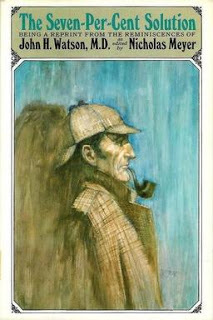 As for myself, I still adore the first Holmes pastiche I ever read, the inspiration for my own work, Nicholas Meyers' The Seven-Per-Cent Solution, which pairs the finest detectives of the 19th century, fictional and real, Sherlock Holmes and Sigmund Freud, in a ripping yarn which also gives us insight into the shaping of Holmes's character.
As for myself, I still adore the first Holmes pastiche I ever read, the inspiration for my own work, Nicholas Meyers' The Seven-Per-Cent Solution, which pairs the finest detectives of the 19th century, fictional and real, Sherlock Holmes and Sigmund Freud, in a ripping yarn which also gives us insight into the shaping of Holmes's character.So leave your choices in the comments (along with your reasons for them if you like) and I'll feature them in a future post. Thanks!
April 10, 2021
In the bowels of the night...

I don't know about other first-time novelists, bit I will confess here that in the lonely hours of the night--every night--I scour google for mention of my book, and sometimes I come up with some truly odd ducks. I decided to share one of those I came across last night. It's by one of those many sites that offers your book as a free download. (My publisher assures me that such sites afford you nothing for free except the opportunity to have your information stolen, possibly your credit card, in exchange for a nasty virus. I'm not sure that's true of ALL such sites, but it's a comforting thought.)
The flowery encomiums of my book are lifted from one such site. It is possibly the most fawning review ever written. And I was half-way through the second paragraph, soaking it all in, before I realized the review was not about my book at all, in fact had nothing to do with my book. I was able to elide over "useful information and life tips", but ran up on the reef at "This memoir..."
In case you haven't read my book, it could in no light be mistaken for a memoir...unless you assumed that I was Dr. John Watson.
I assume that this was a real review which has come unmoored from its original book, and been drafted into service for any book you might have been searching for. It'd a wonderful review for anyone, as long as you ignore things like nouns and possibly adjectives. As a matter of fact, with a little judicious trimming, this could make boffo advertising copy.
The author beautifully combines beauty and truth in an elegant and effective way..."
Why, it's positively Keatsian!
April 9, 2021
Sidney Lumet

"Except in two cases, every writer I've worked with has wanted to work with me again. I think one of the reasons is that I love dialogue. Dialogue is not uncinematic. So many of the movies of the thirties and forties that we adore are constant streams of dialogue.
Of course we remember Jimmy Cagney squashing a grapefruit into Mae Clark's face. But does that evoke more affectionate memory than "Here's looking at you, kid"?
–Sidney Lumet3 Comments12 Masterworks
Remember these twelve paintings, all by French masters, all from a certain period. Most were hanging in the Louvre in 1890. Remember what happened to the Mona Lisa in the Louvre in 1911?

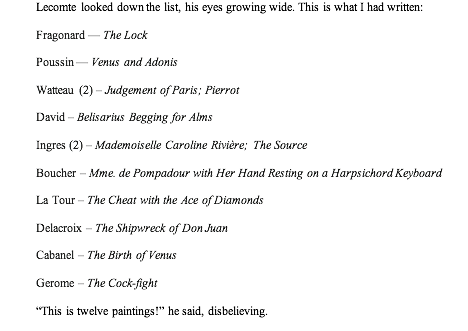 --The Strange Case of the Dutch Painter
--The Strange Case of the Dutch Painter
12 Paintings
Remember these twelve paintings, all by French masters, all from a certain period. Most were hanging in the Louvre in 1890. Remember what happened to the Mona Lisa in the Louvre in 1911?

 --The Strange Case of the Dutch Painter
--The Strange Case of the Dutch Painter
April 8, 2021
For Writers: the Theory of Myth
You've all heard of Joseph Campbell's Hero's Journey, made popular in interviews with Bill Moyers, but have you heard of Canadian critic Northrop Frye's theory of myth, elucidated in his Anatomy of Criticism?
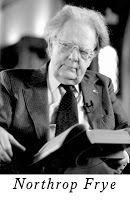 Frye holds (as does Campbell) that myth is the basis for all literature, and all literature can be categorized as one of four archetypal genres or mythos: comedy, romance, tragedy and satire. Further, he associates each genre with one of the four seasons, sharing the cyclical nature of seasons. Moreover, each genre can be merged with its adjacent: thus comedy gives rise to comic romance, romantic comedy, comic satire, satiric comedy, and so on.
Frye holds (as does Campbell) that myth is the basis for all literature, and all literature can be categorized as one of four archetypal genres or mythos: comedy, romance, tragedy and satire. Further, he associates each genre with one of the four seasons, sharing the cyclical nature of seasons. Moreover, each genre can be merged with its adjacent: thus comedy gives rise to comic romance, romantic comedy, comic satire, satiric comedy, and so on. Each archetype gives rise a different relationship between the hero and society. For instance, in comedy, the movement is the hero's integration into society; in tragedy, his expulsion from society. In romance, the audience identifies with the hero; in satire, the audience looks down on the hero.
Further, the hero of each genre moves through six phases, literary structures which can be derived from each mythos-- moving from innocence to experience, from fantasy to reality--but the hero experiences each of them differently, colored by their their genre. In each phase, two of its structures are influenced by the preceding season, two by the succeeding season. There is a downward movement toward tragedy, an upward movement toward comedy
All this may seem a little complex, but it's really quite elegant, describing the general shape of, well--every--story. This is not meant to weigh you down, but to gives you the tools to satisfy the audience's genre expectations (which are bred in the bine) or to subvert them.
Perhaps a diagram will help, Luckily, I happen to have one handy.

You can see, for instance how in the third phase of comedy, the young hero is triumphant: how romance evokes the quest theme, how the hero finds victory in tragedy, while satire engages the victory over common sense. The book is rich with examples of each of these phases.
Again, this is analysis of what has gone before, not a prescription for your next project, any more than music theory should get in the way of writing a song. Study of structure is meant to reveal, not to hamper. If you have any questions on this admittedly incomplete summary, just leave them in the comments below, and I'll try to address them.
For Writers: Myth
You've all heard of Joseph Campbell's Hero's Journey, made popular in interviews with Bill Moyers, but have you heard of Canadian critic Northrop Frye's theory of myth, elucidated in his Anatomy of Criticism?
 Frye holds (as does Campbell) that myth is the basis for all literature, and all literature can be categorized as one of four archetypal genres or mythos: comedy, romance, tragedy and satire. Further, he associates each genre with one of the four seasons, sharing the cyclical nature of seasons. Moreover, each genre can be merged with its adjacent: thus comedy gives rise to comic romance, romantic comedy, comic satire, satiric comedy, and so on.
Frye holds (as does Campbell) that myth is the basis for all literature, and all literature can be categorized as one of four archetypal genres or mythos: comedy, romance, tragedy and satire. Further, he associates each genre with one of the four seasons, sharing the cyclical nature of seasons. Moreover, each genre can be merged with its adjacent: thus comedy gives rise to comic romance, romantic comedy, comic satire, satiric comedy, and so on. Each archetype gives rise a different relationship between the hero and society. For instance, in comedy, the movement is the hero's integration into society; in tragedy, his expulsion from society. In romance, the audience identifies with the hero; in satire, the audience looks down on the hero.
Further, the hero of each genre moves through six phases, literary structures which can be derived from each mythos-- moving from innocence to experience, from fantasy to reality--but the hero experiences each of them differently, colored by their their genre. In each phase, three of its structures are influenced by the preceding season, three by the succeeding season. There is a downward movement toward tragedy, an upward movement toward comedy
All this may seem a little complex, but it's really quite elegant, describing the general shape of, well--every--story. This is not meant to weigh you down, but to gives you the tools to satisfy the audience's genre expectations (which are bred in the bine) or to subvert them.
Perhaps a diagram will help, Luckily, I happen to have one handy.

You can see, for instance how in the third phase of comedy, the young hero is triumphant: how romance evokes the quest theme, how the hero finds victory in tragedy, while satire engages the victory over common sense. The book is rich with examples of each of these phases.
Again, this is analysis of what has gone before, not a prescription for your next project, any more than music theory should get in the way of writing a song. Study of structure is meant to reveal, not to hamper. If you have any questions on this admittedly incomplete summary, just leave them in the comments below, and I'll try to address them.



